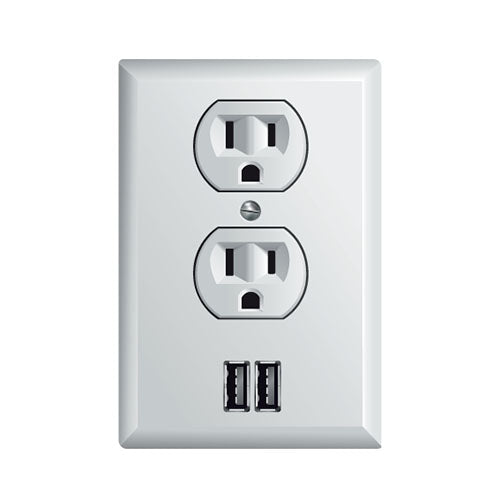

Power Receptacles: The Basics
 Electrical plugs and sockets differ in voltage and current rating, shape, size, and type of connectors. In North America, we use connectors standardized by the National Electrical Manufacturers Association. The devices are named using the format NEMA n-mmX, where n is an identifier for the configuration of pins and blades, mm is the maximum amperage, and X is either P for plug or R for receptacle. For example, NEMA 5-15R is a configuration type 5 receptacle supporting 15 amps. It sounds complicated, but it is a system that helps enable electricians and consumers alike to correctly identify the amount of power a particular power receptacle can handle.
Electrical plugs and sockets differ in voltage and current rating, shape, size, and type of connectors. In North America, we use connectors standardized by the National Electrical Manufacturers Association. The devices are named using the format NEMA n-mmX, where n is an identifier for the configuration of pins and blades, mm is the maximum amperage, and X is either P for plug or R for receptacle. For example, NEMA 5-15R is a configuration type 5 receptacle supporting 15 amps. It sounds complicated, but it is a system that helps enable electricians and consumers alike to correctly identify the amount of power a particular power receptacle can handle. Power Receptacles: Their Importance
The power receptacle exists to reduce the risk of users accidentally touching energized conductors and thereby experiencing an electric shock. A brief back story—the power receptacle started becoming available in the 1880s, to replace connections to light sockets with easier to use wall-mounted outlets. Throughout the decades, many types of power receptacles were developed throughout the world in order to address the issues of convenience and protection from electric shock. When you think of them this way, their importance is increased substantially! Today there are approximately 20 types of power receptacles in common use around the world and, luckily, they are much safer and more convenient than they were back in the 1880s. Power receptacle systems today often incorporate safety features in addition to the recessed slots or holes of the energized socket. These may include sockets with blocking shutters and sockets designed to accept only compatible plugs inserted in the correct orientation. If you have an older home or office, or if a power receptacle was damaged, it is very important to update the power receptacle to a newer, safer version.Types of Power Receptacles
When it comes to equipment that connects directly to the electrical mains of your home or office building, we highly recommend purchasing quality materials. Low-quality equipment can, at best, damage your gadgets and, at worst, cause serious injury. While some people may think that the power receptacle is a standard, non-changing object, we have seen exceptional new developments in power receptacle technology and design. With our technology-obsessed society, it has become that much more important to be able to charge your cell phone, tablet, and iPod® quickly and easily. 
Enter the USB charging outlet. Available in either 120v outlet + USB ports or all USB ports, this power receptacle allows you to streamline your USB charging—reducing clutter and providing an easy way to power your most-used devices. In addition to the functional use of the power receptacle, we’ve seen great updates to the power receptacle’s aesthetic. As more and more things go wireless, there has been less of a need for wires and cables. However, we’re still a long way from a world with no wires and, until that day comes, you may want to consider a power receptacle that can neatly hide and organize wires you wish to disguise. Items like a bulk cable wall plate allow you to install power and low voltage cables behind your flat panel TV, your amplifier, or other audio and video devices.


